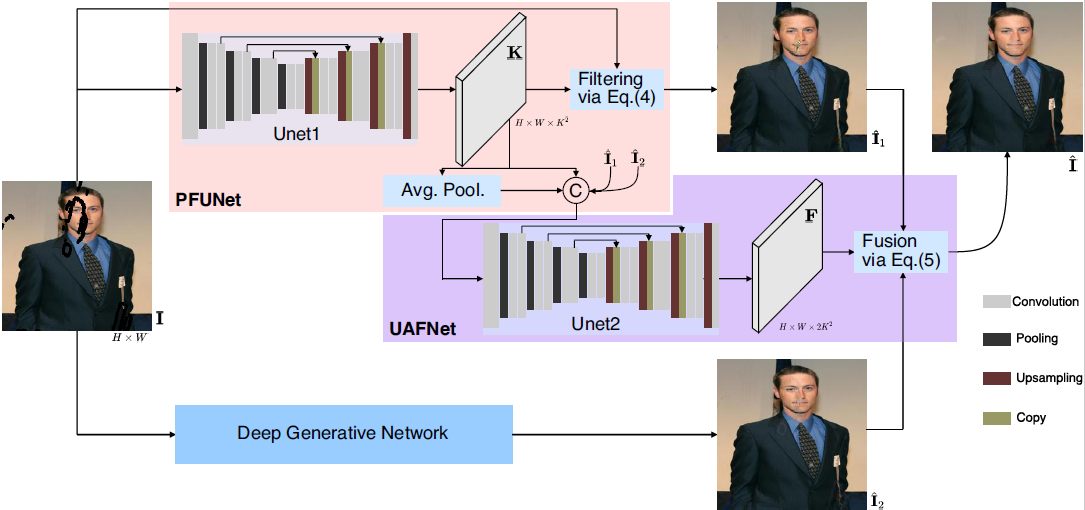JPGNet: Joint Predictive Filtering and Generative Network for Image Inpainting
Image inpainting aims to restore the missing regions of corrupted images and make the recovery result identical to the originally complete image, which is different from the common generative task emphasizing the naturalness or realism of generated images. Nevertheless, existing works usually regard it as a pure generation problem and employ cutting-edge deep generative techniques to address it. The generative networks can fill the main missing parts with realistic contents but usually distort the local structures or introduce obvious artifacts. In this paper, for the first time, we formulate image inpainting as a mix of two problems, predictive filtering and deep generation. Predictive filtering is good at preserving local structures and removing artifacts but falls short to complete the large missing regions. The deep generative network can fill the numerous missing pixels based on the understanding of the whole scene but hardly restores the details identical to the original ones. To make use of their respective advantages, we propose the joint predictive filtering and generative network (JPGNet) that contains three branches: predictive filtering & uncertainty network (PFUNet), deep generative network, and uncertainty-aware fusion network (UAFNet). The PFUNet can adaptively predict pixel-wise kernels for filtering-based inpainting according to the input image and output an uncertainty map. This map indicates the pixels should be processed by filtering or generative networks, which is further fed to the UAFNet for a smart combination between filtering and generative results. Note that, our method as a novel inpainting framework can benefit any existing generation-based methods. We validate our method on three public datasets, Dunhuang, Places2, and CelebA, and demonstrate that our method can enhance three state-of-the-art generative methods significantly with slightly extra time costs.
PDF Abstract


 CelebA
CelebA
 Places
Places